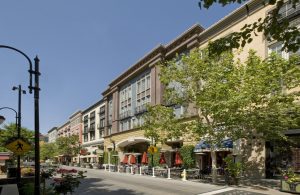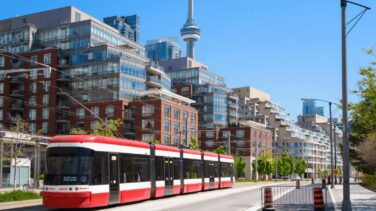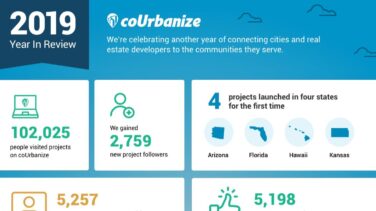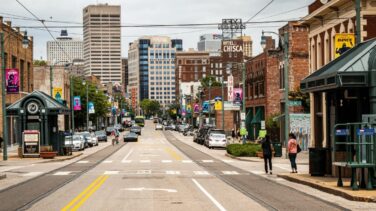
This year, many real estate companies have changed their businesses because of the pandemic, the ensuing economic crisis, and calls for social and racial justice. This goes beyond just figuring out how to work from home temporarily or make other short-term changes.
The most progressive owners and developers are rethinking how 2020 will fundamentally transform how they work and bring projects to life – from the earliest aspects of acquisition and predevelopment to building operations once the ribbon is cut.
We’re breaking down the changes that have had the biggest impact on the real estate teams we work with today.
Predevelopment
Fear and apprehension about development are rooted in uncertainty about what change will bring to the community. Sometimes these fears are about added density or new zoning changes (apartments), but more so these concerns in so many communities are about gentrification.
Will current residents be displaced or priced out of the neighborhood? Will a project look like every other modern development or will it reflect the unique fabric of our community?
2020 has also spotlighted long-overlooked community needs – and new ones, too. Access to healthcare, grocery stores, and accessible open space were just a few of the needs that quickly rose to the top of the themes we saw in community feedback this year.
So what can development teams do about these concerns and needs from the very beginning of the process?
Engaging people who already live or work in the neighborhood early in the process – before plans are even formally presented – will give teams the opportunity to incorporate community benefits into the project. That could mean repositioning restaurant space to allocate for a grocery store or incorporating different levels of housing affordability into the project.
One of our customers recently shared this advice for approaching predevelopment – start with a gray box and then base what’s going in that box based on what the community needs. A team may know that a project will be mixed-use, but the community where you’re building should play a major role in shaping the specific aspects of a project.
That doesn’t mean that every decision is driven by community consensus. Instead, this method assumes that a project team has the knowledge and understanding of the surrounding community to make informed decisions.
Construction
Supporting local contractors, consultants, and vendors is one of the most impactful ways you can build trust and rapport with the community, especially during the construction phase.
This is only getting smaller and more hyper-local. Instead of just selecting vendors based within the state or a 50-mile radius, think about the businesses you can support within 5-10 miles of a project site.
We’ve seen strong community responses to development teams who commit to selecting a certain percentage of service providers, contractors, subcontractors, suppliers, and artisans from the surrounding area. In addition, what percentage of these businesses could be small, women, Black, or minority-owned?
Another aspect of construction that falls under the responsible development umbrella has to do with sustainability. This covers sustainability in the traditional sense, from the materials used and efficiency of the building to how a project improves the resiliency of the community. How does this project make the community more resilient, meaning will it improve the lives of residents for years to come?
Activation and Operations
Too often, people expect the same activation and programming that worked in one neighborhood or one development to work in another.
There are definitely common elements that work no matter where you are – for example, everyone seems to want more green space – but teams should go deeper to design spaces, use cases, and activities that reflect the particular fabric of the community.
Similar to the advice above on construction, this phase gives teams the opportunity to support local businesses, artists, and experts as the focus shifts to building operations and creating a community within a community.
Affordable housing developers do a tremendous job with this because they continue to provide services and support – beyond just property management – to build community and resiliency.
Whether you’re handing over the keys to the property management team within your organization or are outsourcing that to a real estate services firm, it’s important to transfer the insights you’ve learned about the community to these teams. That way, nothing is lost in translation.
As we look forward to 2021, rethinking how projects are brought to life means ensuring our long-term success and fulfilling our collective visions of building better projects and creating better communities. If you’d like to learn more about how coUrbanize can help your team advance more responsible and sustainable development, reach out at sales@courbanize.com or request a demo here.


